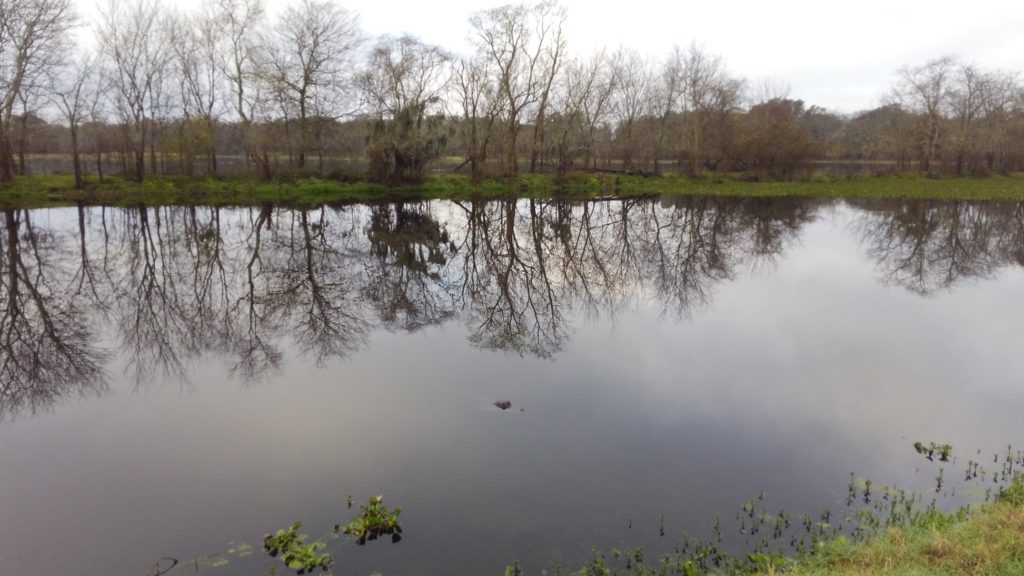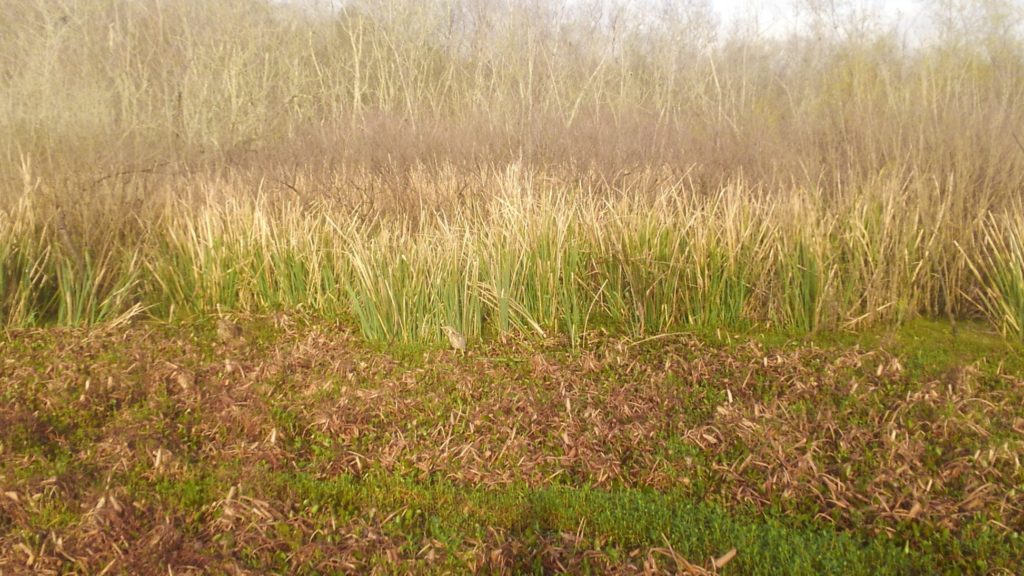
It was early in the morning on a Saturday, and the park wasn’t officially open yet. My friend Janey and I are walking in that slow, quiet gait that birders develop along the southeast section of 40 Acre Lake, scanning the tree tops for signs of the Barred Owl that has been spotted out there. I thought I saw the slow descent of a large bird above us, and soon we were rewarded with a visual sighting of this remarkable creature, much to our excitement. It was a great start to a fun couple of hours filling a checklist with observed species.
We don’t own a great lens for birding and I wasn’t tracking our finds on E-bird, but simply recording the new species for my yearly list on GNotes. Someday we’ll be able to invest in a good lens for the Nikon. Janey has a great camera, though, and gets some amazing wildlife shots with it. For the curious and to see some good shots, you can see Janey’s checklist here. We found about 32 different species of birds.
The highlights, though, included these moments: a couple of Carolina Wrens singing and posing on and around a dead log, the owl of course, the Anhinga, and the American Bittern that was just right there in the light of the morning, slowly catching several crawfish in the shallows. We noticed the photographer first, a man who had gotten himself a sweet little spot along the bank to sit for focused shots, and then we watched this creature for a while. Viewing it with binoculars, I could really see the detail on the intricate beauty of the feathers.

We saw and heard a lot of bird action in the nearby wild rice, and after some back and forth, ID-ed a Common Yellow Throat. On the way out, we stopped for a bit to try to figure out who we heard singing in the upper brush. We saw a Gray Catbird, but this was not the one we were listening to. Janey thought she saw a White Eyed Vireo but wasn’t sure when she had to leave for her volunteer training session. I really wanted to know what it was to claim it for my finds list, so I prowled through the brush and then finally just sat on a bench for a while, and was rewarded by the bird coming right out into the open for me to get a good look and verify that it was, in fact, a White Eyed Vireo making that bright little song.
On the way home, I noticed that initially when I was driving, I was still scanning for birds, and it was distracting. It made me think about this article a friend had posted on Facebook about developing situational awareness. In a way, birders are using situational awareness when they are out looking for birds. You have to become more mindful of your surroundings than usual. You become more in touch with your senses, more sensitive to the sounds and movements around you.
That is one of the skill sets that I have been building going on birding walks with the Audubon groups. I used to walk through the woods and miss most of what was going on around me, because I wasn’t paying as much attention. In order to find birds, your eye has to seek out the anomalies in the environment: the slight fluttering of wing, movement of little bodies from one branch to another behind the shrubs. Then, when you leave the woods and start driving, you (or at least me) have to turn it off at some point, because it is hard to maintain that kind of focus on slight movements when you are going sixty miles an hour.
We tried teaching mindfulness in the workplace this past year, and I haven’t heard any feedback from others about how it worked for them, if they noticed anything different while practicing these techniques. I do use this kind of mindful awareness to do aspects of my job, as it helps me notice more aspects of animal behavior. It is calming to use that kind of focused awareness, and you also need to stay calm to be proficient at it. In that situational awareness article, they actually talk about this, stating that when a person is not calm, they tend to develop tunnel vision and miss some details around them.
I feel much calmer after practicing this in the forest, which is why these kind of activities are good mental breaks for me. I was very relaxed and happy driving away from the park. I am going to continue more of this over the spring, maybe even next weekend with Janey, maybe even with Jason’s camera. It helps me to be a better mother and wife when I have time to get into the woods, clear my mind, and really focus on the present, with the therapy of wing and wind.